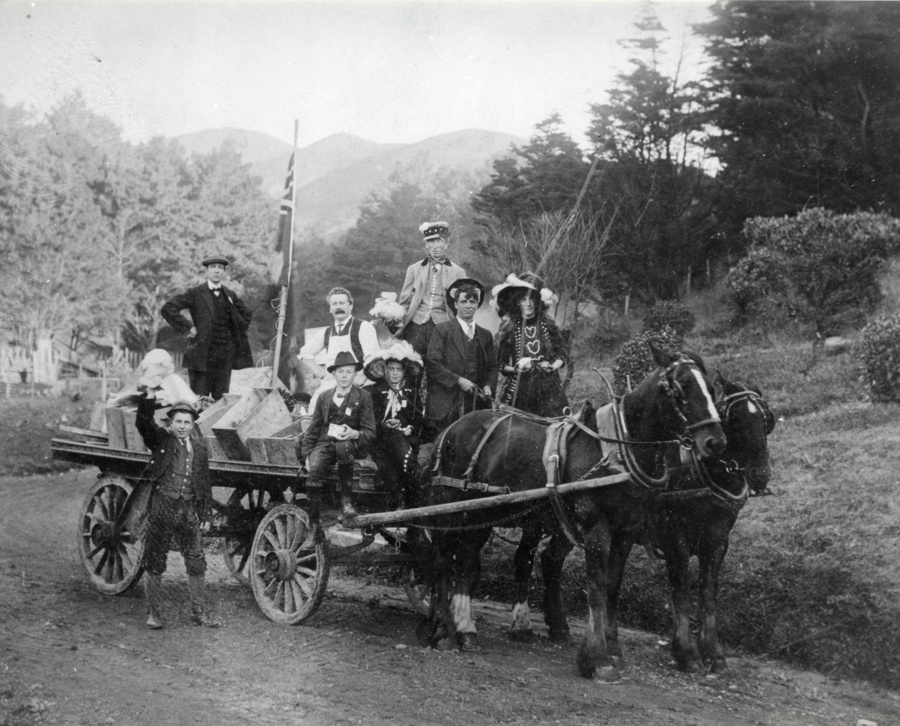
General Post Office staff on the road with the Belgian Relief Fund, around 1915.
Relief for Belgium
Many New Zealanders rallied to send assistance to Belgium when war broke out in 1914. Clothing, bedding and food were all sent to Belgium to assist those affected by the war. New Zealanders also made donations to the British and Belgian Relief Fund, based in London. By early 1915, New Zealanders had sent over £37,000 to London for Belgium – a contribution which, in the words of Belgian Minister Count de Laising, ‘is so deeply appreciated by my suffering countrymen, and will ever be remembered by them’.
Mayors in towns and cities set up relief funds to handle donations of goods and money for Belgium. Shops and workers sometimes pledged money weekly. In March 1915, Herbert Seaton’s Cut Rate Stores paid their sixth weekly instalment into the Wellington fund.
A Belgian Relief Fund started in Auckland in October 1914, and finally wound up in 1920. Mr H.E. Partridge presented 80 paintings by Gottfried Lindauer to the citizens of Auckland in 1915 – on condition that the city raise £10,000 for the fund. That sum, and more, was raised within a few weeks. The Partridge collection now forms part of the Auckland City Art Gallery.
There were some novel ways of raising money to help Belgium. Profits of the 1915 New Zealand inter-university Easter tournament went to a Belgium Relief Fund. Shows and galas donated their proceeds to Belgian relief funds. In Wellington in March 1915 the Victoria League hosted an evening of entertainment based on Alice in Wonderland, with proceeds going to the Belgian Food Fund. The Otago and Southland Women’s Patriotic Association ran a Crumb Card, with proceeds going to help ‘Belgium’s starving children’. One penny bought a card or crumb; 2 crumbs made a morsel, 2 morsels a slice, and 3 slices a loaf. Association member Jean Burt later received an award from the Belgian government for her wartime services.
Belgium received all manner of goods from New Zealand. A Christchurch group sent blankets and clothing in late 1914, with transport paid by the New Zealand government. Produce and clothing flooded in to the Belgian Relief Fund in 1915. Shannon supplied ‘fat sheep’ in early 1915, and apples went the following year – although some were reported to have gone missing en route to Belgium.



Community contributions